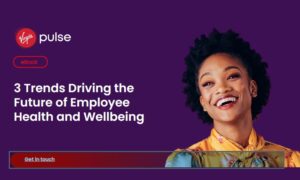Comms meets IT: Planning for the end of Meta’s Workplace tool
Dawn Foods’ strategy for navigating the sunsetting of Workplace suggests a bigger role for comms in tech decisions.

When Meta announced plans to discontinue its internal social media platform Workplace next year, internal communications leaders were put in a precarious position.
Faced with news that the popular tool will become read-only and free in August 2025 before being completely defunct by June 2026, those who centered their employee engagement strategies around Workplace needed to go back to the drawing board.
Dave Lawrence, senior manager of global internal communications at bakery product company Dawn Foods, remembers being early on the Workplace bus in 2018.
“It was one of my first big projects at Dawn, and we were really excited to roll it out to the global team,” he said. “For the first time, we offered a channel for the global team to talk with each other. Colleagues in Europe, in LATAM, in North America got to see our business and hear from the people who ran the business.”
The imminent demise of Workplace created an opportunity for Dawn’s comms team to rethink how it engages employees from the ground up. This prompted an audit of its comms tech stack, driven by a partnership between comms and IT.
Collecting feedback
After news of the sunset hit, Lawrence’s team asked anyone they could for feedback about what they’d like to see from the tech stack. This included an internal advisory council, Dawn’s commercial team and more.
Questions included:
- What did you enjoy about it?
- What didn’t you like?
- If we were to do something new, what would you do differently?
Workplace granted Lawrence and other employees who didn’t talk with customers every day the visibility to see what the sales team does out on the field.
“The emotional part, I think, comes from people being able to see a wider view of our business, and Workplace gave them that every single day,” he continued. ““People told me that they were able to see who our customers are for the first time and what our products look like in those bakery cases.”
Weighing alternatives
Taking the summer to get internal feedback enabled Dawn’s team to go shopping externally for a Workplace replacement that could still connect its community to the business effectively.
As of this writing, Dawn has narrowed down the search to three tools. One of them is Workvivo, an integrated employee communications platform chosen as Meta’s official Workplace migration partner. This means that the company developed a migration tool in partnership with Meta,to help former Workplace users transition seamlessly to Workvivo.
As such, Workvivo’s leaders are taking a pulse of customer sentiment in the market to better understand how they can position this tool as the best means for a seamless transition away from Workplace.
“We found a lot of feedback that customers were very reliant on Workplace, they have their entire community inside this tool, and it’s the main tool that C-level leadership are actually active on,” explained Workvivo CMO Gideon Pridor.
“When we sell to bigger Workplace customers, we often hear feedback that they’re kind of traumatized by this news,” he continued. “They’re reluctant to take another risk and do a whole migration that ends up with a half-baked tool.”
Likening the migration tool to fitting two puzzle pieces together, Pridor reminds prospective customers that every record on Workplace’s side has an address on the WorkVivo side.
“You can’t develop a migration to something that doesn’t exist,” he said. “There is only one official migration tool today that Meta engineering developed — the tool they developed with us.”
Lawrence acknowledged the one-to-one migration makes Workvivo a slightly more attractive choice, but it raised another question: “Do we have to move everything over, or do we start with a clean slate?”
Mapping the themes
The main drivers of Dawn’s decision will ultimately be ease of use, user-friendliness and user experience.
Some platforms pitched Lawrence on the idea of an integrated intranet that syncs with emails, digital signage and social media all in one. Another did half of those things but prioritized the mobile app and Teams integration.
“One of the difficult parts of asking coworkers what they want is you get 100 different answers,” said Lawrence. “Distilling some themes was part of my job.”
One theme emerging in multiple variations was “simplify things”.
Lawrence and his team heard over and over that the group structure of Workplace wasn’t user-friendly.
“To somebody who isn’t in there every day, the groups can be kind of confusing,” Lawrence explained. “You have 20 groups, but they are only focused on one big group that everybody at Dawn is in.”
Simplicity, as identified by internal stakeholders, looks like a one-stop shop where they can get all the relevant information they need to do their jobs.
Another theme was frontline integration. A third of Dawn’s team members are factory and distribution warehouse team members without Microsoft accounts or access to digital tools.
“We were weeks away from rolling Workplace out to the audience back in May, then the news [of the Workplace shutdown] came out and we had to put that on hold,” said Lawrence.
A frontline component is not something Dawn expects at launch, but a feature they want to ensure they can implement down the road.
Growing comms’ influence through the IT partnership
Working with customers on the migration process reminds Pridor that IT is not always properly aligned with comms goals. He’ll often deal with a head of comms when working with enterprise organizations but finds comms doesn’t have the same level of influence at smaller organizations. Sometimes, they’re not even invited into the decision-making process by IT.
“IT would lean toward another free thing in [an existing tool], but would expect to be admins of that tool,” said Pridor. “They would prefer a build versus a buy. They’ll ask you a million RFP questions about compliance, integration and levels of permissions. But they will never ask you about adoption.”
That said, Pridor sees a huge shift in the expectations of a CIO today. “They have to think about things like feelings that were always off limits,” he said.
Comms can help here, too. Strategic alignment between comms, HR and IT helps Lawrence and his team lead the search for a new employee engagement tool while folding in the strengths of other functions.
“IT is a partner at our side as we’re going through this process,” he said. “We want them at the negotiation table. We want them to vet security, tech stack integrations and all that stuff. But ultimately, it’s a communications platform, so we feel like we can take the lead on this project.”
HR is right there with them, too, united in shared concerns for culture, engagement and employer brand.
“So, while we’re leading the effort,” said Lawrence, “we have really good partners that help us make those decisions.”







